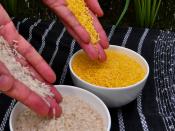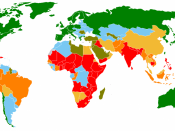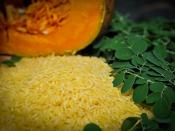In 1999, a breakthrough in the field of agricultural genetic engineering was announced. This new development was "golden rice" that was genetically engineered to contain a substance that the body can convert into vitamin A called beta-carotene. Golden rice was instantly heralded as a miracle cure for the millions of people afflicted with vitamin A deficiency in less developed countries than our own.
The main victims of vitamin A deficiency are the poor children and pregnant women of the Philippines, Thailand, India, Indonesia, Bangladesh and Vietnam. Every year, vitamin A deficiency causes up to one million deaths and 500 000 cases of irreversible blindness in children in developing countries. It also causes the body's immune system to deteriorate, making those lacking in the nutrient especially susceptible to infections such as malaria and measles as well as minor illnesses. Pregnant women who have vitamin A deficiencies are more likely to die after or during childbirth.
As rice is the staple food around the world, scientists hope that introducing building blocks of vitamin A into rice could combat the problem on a global scale. Golden rice was created by Ingo Potrykus of the Swiss Federal Institute of Technology created golden rice by splicing three foreign genes, one from a bacterium and two from the daffodil, into Japonica rice. This particular variety of rice is well adapted for the temperate regions where the rice is expected to have life-saving potential. To breed the vitamin A trait onto varieties of rice that are adapted to local climates in developing countries is estimated by the developers to take at least five more years, though this is optimistic considering the complexity of the genetic engineering required.
As the world anticipates the arrival of the controversial golden rice, a debate is pinpointed on it as an example...


